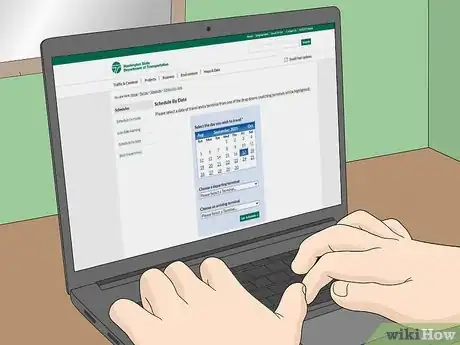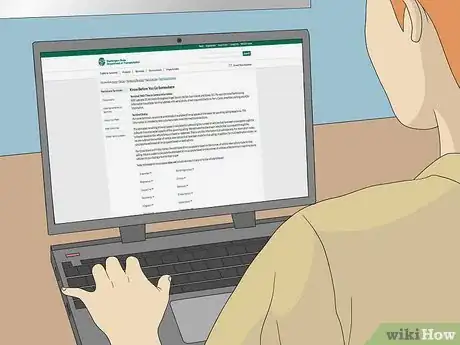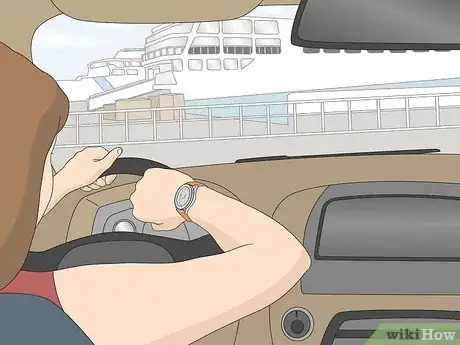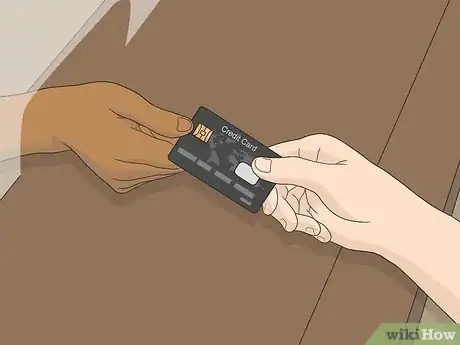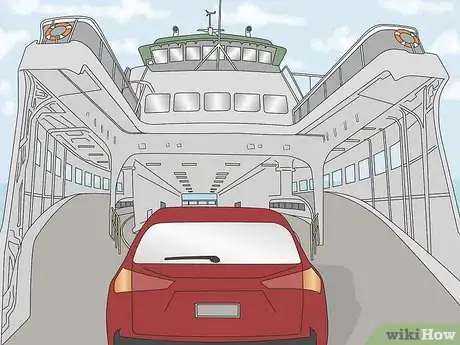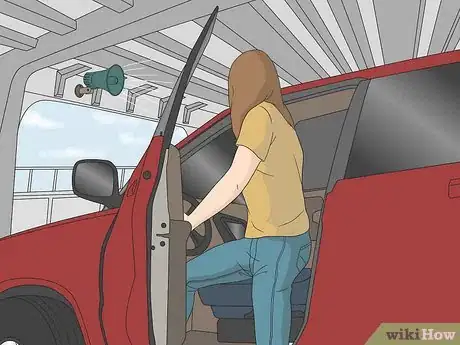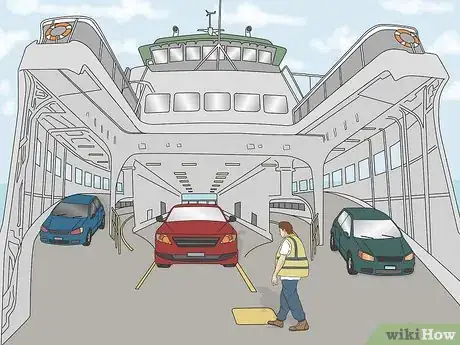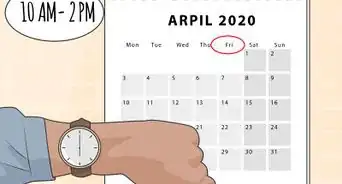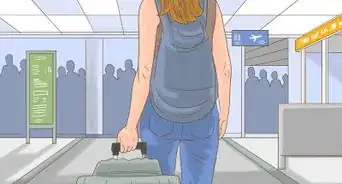wikiHow is a “wiki,” similar to Wikipedia, which means that many of our articles are co-written by multiple authors. To create this article, 9 people, some anonymous, worked to edit and improve it over time.
This article has been viewed 33,541 times.
Learn more...
Washington State Ferries is the nation's largest ferry network and the world's 3rd largest. A lot of people in the Seattle Metro area rely on them to get to work, while others rely on them to reach their day trip/vacation spot. Riding one of these can be a simple and very rewarding experience, but it can also take some planning on your part. This guide is intended for people who have just moved to the Puget Sound area and people riding a ferry in order to reach Victoria and the San Juan Islands.
Steps
-
1Look up the ferry schedule on the Washington State Ferries website.[1] A link is provided at the bottom of this page. Use this site to get info on next sailings and reservations (Port Townsend-Keystone routes and Anacortes-Sidney B.C. routes only).[2]
- There are more than twelve different routes, including a water-taxi service to West Seattle and one for Vashon Island and many different stops in the San Juans.
- The WSDOT Ferries website also has announcements about any schedule adjustments for things like weather or construction on the piers.
-
2Check the list of terminals. Again, a link is provided at the bottom of the page.[3]
- There are two ferry terminals in Seattle: one on the downtown waterfront and one at Fauntleroy, in West Seattle -- for access to Vashon Island.
- Other terminals include: Bainbridge, Bremerton, Tacoma (Point Defiance), Vashon, Southworth, Talequah, Edmonds, Kingston, Mukilteo, Clinton, Sydney (B.C.), Anacortes, Friday Harbor, Orcas Island and Shaw Island.
Advertisement -
3Arrive about 20-30 minutes before sailing if going by car, or about 15 minutes before for on-foot. High traffic ferries going between the San Juans require almost 1 1/2 hours by car and about 30 minutes by foot. On-foot rides are generally recommended for most sailings.[4]
- For international trips, plan to arrive 60 to 90 minutes prior to the scheduled departure, so that all immigration and customs documentation can be taken care of.
-
4Pay up. If you prefer, you can purchase tickets online.[5] Prices vary greatly depending on the route (which can be $8.50 a person or about $20 for a car and driver for the Bremerton route to almost $17 dollars a person and $28 to $60 dollars for a car/driver on the Sidney routes). Credit cards are accepted.
- There are discounted fares for those 65 and over, people with disabilities and for children. Kids under 6 ride for free.
- If you have a trailer or an extra long (over 22 feet or 6.7 meters) or tall vehicle (over 7 1/2 feet or 2.3 meters), such as an RV, there will be additional surcharges. There is a discounted fare for small cars and for motorcycles.
- Different fares also apply for all vehicles during "peak season", which is May 1 to September 30, adding another 25 percent.
- Most fare are "one-way", except those to "the islands" having no bridges to the mainland. Nearly all passenger tickets are "round-trip", except Sydney and Port Townsend/Coupeville.
- There are waiting areas for vehicles and you may be assigned a specific lane by the ticket seller or pay attention to flaggers who will direct you. At some terminals, such as Bainbridge, there is "overflow waiting" that backs up along the edge of local highways.
-
5Board. If going by car, you'll load into a garage area of the ship, park, and then take stairs up to the main passenger area. If going on foot, you'll cross a bridge onto the viewing deck and directly into the main passenger area.
- Be extremely careful when opening your vehicle doors, or letting children out, if not everyone has finished parking next to you.
-
6Sit back and enjoy the show. This is the best part of the ride: every route is scenic, providing legendary views, and cameras are recommended. The ferries also provide wifi service for $7 a ride or $30 a year. Little cafes are on board, along with vending machines. Eating tables are provided for these purposes. The passenger area itself can be explored, and outside viewing decks and lounges can also be found. Scattered around are various editorials, pamphlets and advertisements for places in the Puget Sound area. A typical ride lasts about 45 minutes, but can be as long as 3 hours.
- It's not the same as "taking a cruise", but many people are happy to meet new people, share a lunch table, and exchange pleasantries and conversation.
-
7When arriving at your destination dock, don't poke around. Get to your car when prompted by the bells and loudspeaker announcements. Pedestrians should get to the unloading area when prompted.
-
8Unload. This should be pretty self explanatory.[6]
- Unloading of vehicles is not always in the same order as loading. The crew members are experts in maintaining the necessary balance and flow. Watch for bicycles and for late drivers who didn't make it back to their cars on time.
-
9Get on public transportation or rent a moped. If you brought your own car, you can skip this step. If you arrived by foot and have no intention of venturing far past the ferry dock, you can also skip this step. If, however, you're going to go far past the dock (such as exploring the San Juans or getting to your work 10 blocks away), you'll need to board a Metro bus, light rail train, or Sounder train. Up in Friday Harbor, you have the option of renting vehicles to go around with.
- The Sounder Train runs between Everett, Seattle and Tacoma.
- The Link Light Rail runs from Seattle to the Sea-Tac airport. There are also some streetcars in downtown Seattle.
-
10Enjoy your trip!
Community Q&A
-
QuestionHow do I reserve an Edmonds spot?
 Upnorth HereTop AnswererReservations are not available on the Edmonds route -- only on the Sydney routes, San Juan Island routes, and Port Townsend/Kingston. According to WSDOT: Reservations can be made online at the ferry's website or by calling their toll-free number before the lockout period, which is two hours prior to the desired sailing.
Upnorth HereTop AnswererReservations are not available on the Edmonds route -- only on the Sydney routes, San Juan Island routes, and Port Townsend/Kingston. According to WSDOT: Reservations can be made online at the ferry's website or by calling their toll-free number before the lockout period, which is two hours prior to the desired sailing.
Warnings
- Listen very carefully to the emergency procedures at the beginning of every departure. You may need them.⧼thumbs_response⧽
Things You'll Need
- Money
- Below websites
- A terminal
- A camera
References
- ↑ WSDOTFerry Routes and Schedules
- ↑ https://www.wsdot.wa.gov/ferries/schedule/schedulebydate.aspx
- ↑ https://www.wsdot.wa.gov/ferries/vesselwatch/Terminals.aspx
- ↑ https://www.wsdot.wa.gov/Ferries/infodesk/faq/general_info/
- ↑ https://www.wsdot.wa.gov/ferries/wave2go/
- ↑ https://www.wsdot.wa.gov/ferries/bicycles
